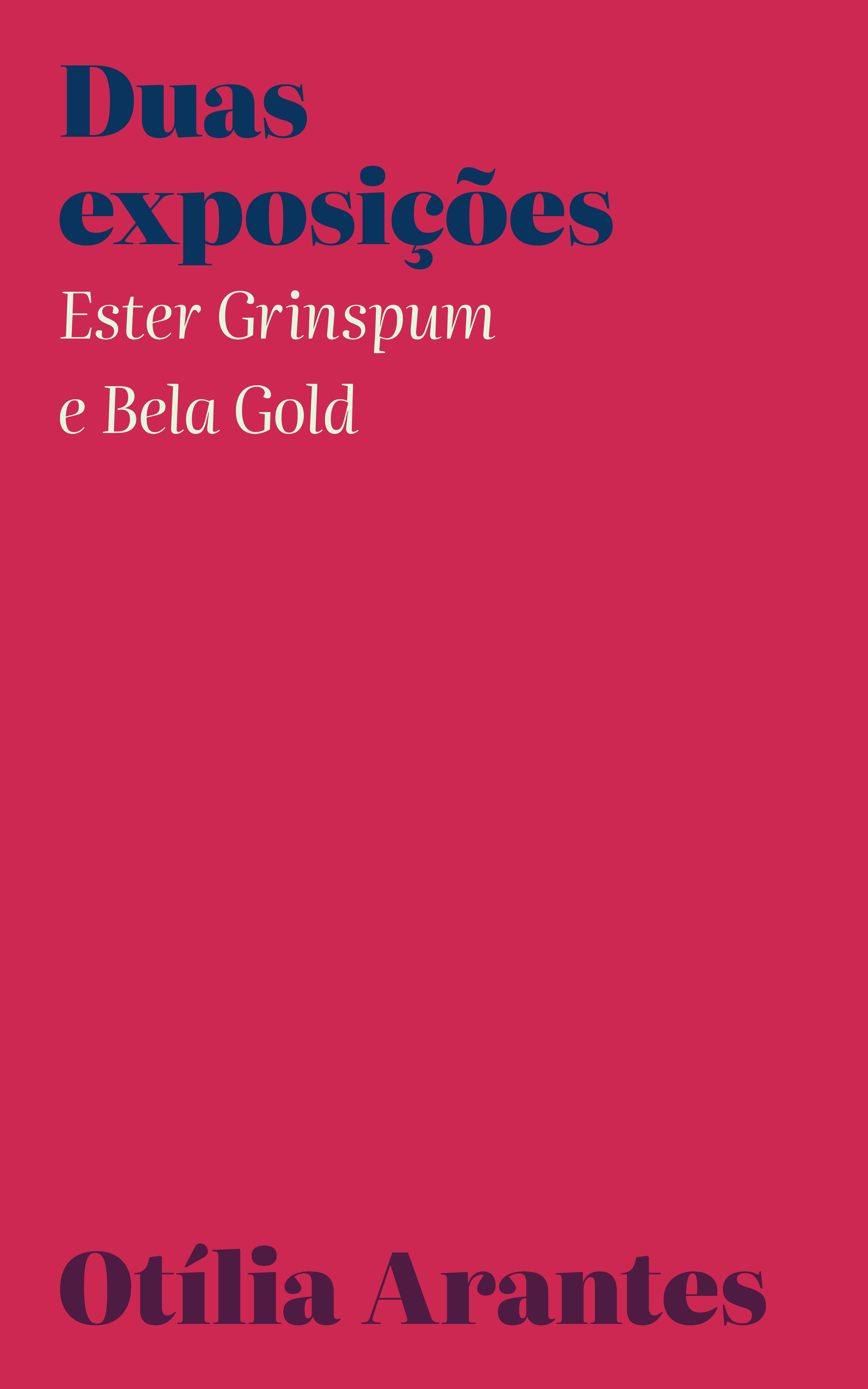Two exhibitions
Ester Grinspum and Bela Gold
2004
Synopsis
The two themes addressed long ago by Otília Arantes remain relevant today in the presentations of Ester Grinspum’s exhibitions (Stultifera Navis, at Galeria Paulo Figueiredo in 1986) and Bela Gold’s (The Book of Memory, at the Lasar Segall Museum in 2004): "Madness" and the "Holocaust," respectively. According to Otília Arantes, Ester Grinspum’s series of drawings, rather than theatricalizing madness or conjuring the delusions of an exasperated subjectivity — the monsters of the "sleep of reason" —, primarily suggests the confrontation between reason and unreason, articulated through the clash of two forms: on one side, a monolithic, closed form, a rock or "Theater of the World" (as titled in her preliminary studies); on the other side, an irregular, open form, a bird or "Ship." Grinspum’s drawings inevitably evoke the world's disarray without producing a detailed chronicle but instead trace the painful outline of anonymous abstraction, characteristic of the contemporary age. At the heart of this confiscated experience lies the very structure of bourgeois society, literally schizophrenic. Thus, the entire body of drawings serves as a grand allegory of madness and the world that feeds it. By delving into 15th-century iconography — the oddities and absurdities depicted by Bosch, Brueghel, or Dürer —, Grinspum is not interested in the historical framework supporting these works but seeks to capture the zero-degree of the plastic physiognomy of madness. If Foucault is also an important source for the artist, while the philosopher examines pictorial imagery to uncover the ultimate cipher of a technology of reason, the artist takes the opposite path and sees in these images the prefiguration of a modern threat.
Similarly, the Argentine artist Bela Gold undertook the difficult task of bringing the greatest horror of the 20th century, the Holocaust, into the realm of art — if an aesthetic expression of it exists and, if possible, if it can be truthful, as Otília Arantes notes. The hesitation surrounding the artistic representation of absolute evil, a leap into the inferno of the unpresentable, is not unique to the artist but recalls Adorno's ambivalence, who alternated between deeming any poem written after Auschwitz barbaric and regarding art as a fragile barrier against the return of such horrors. Bela chooses the latter view and, to circumvent the prohibition against transfiguring horror into art, employs fragments of reality — lists of names, photographs, letters, signatures, inscriptions, and tags — rescuing the memory of countless victims from anonymity. All of this is done without fanfare or superficial effects, in the restrained form of conceptual or minimalist art (as characterized by Rita Eder), avoiding the trap of post-catastrophe stylization and inviting silent reflection on the death drive of a new system of violence forming on the horizon. "Fearing the worst, let us salute the restraint and modesty of Bela Gold's art of remembrance," concludes Otília.
Keywords: Adorno, Bela Gold, Ester Grinspum, Foucault, Holocaust, Book of Memory, Madness, Stultifera Navis, Theater of the World.

Series
Categories
License

This work is licensed under a Creative Commons Attribution-NonCommercial-NoDerivatives 4.0 International License.


